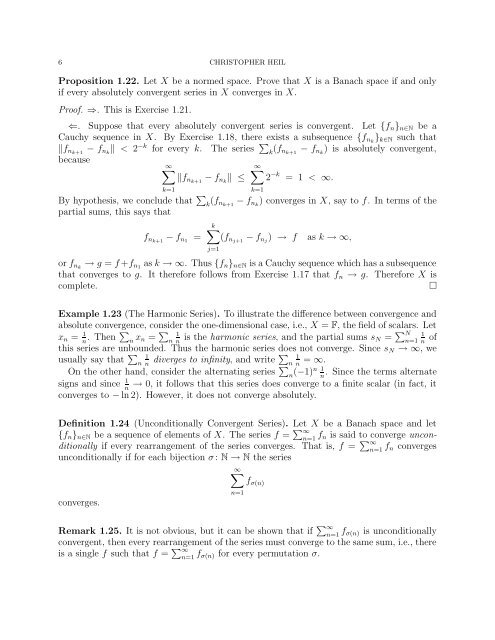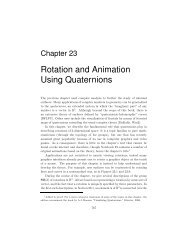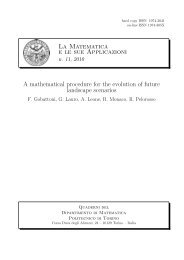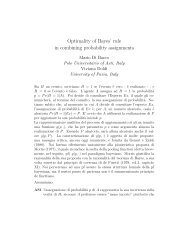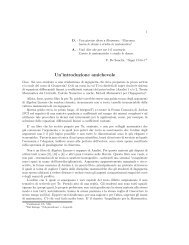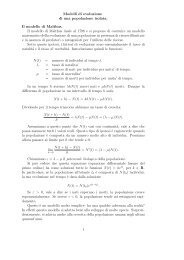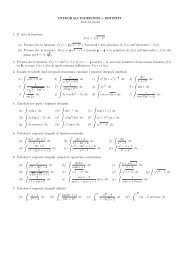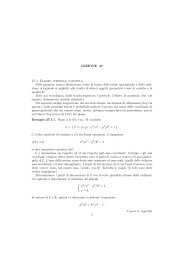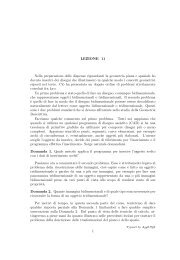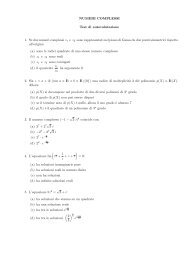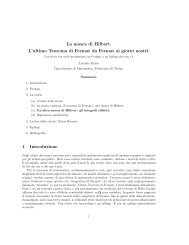FUNCTIONAL ANALYSIS LECTURE NOTES CHAPTER 3. BANACH ...
FUNCTIONAL ANALYSIS LECTURE NOTES CHAPTER 3. BANACH ...
FUNCTIONAL ANALYSIS LECTURE NOTES CHAPTER 3. BANACH ...
You also want an ePaper? Increase the reach of your titles
YUMPU automatically turns print PDFs into web optimized ePapers that Google loves.
6 CHRISTOPHER HEIL<br />
Proposition 1.22. Let X be a normed space. Prove that X is a Banach space if and only<br />
if every absolutely convergent series in X converges in X.<br />
Proof. ⇒. This is Exercise 1.21.<br />
⇐. Suppose that every absolutely convergent series is convergent. Let {fn}n∈N be a<br />
Cauchy sequence in X. By Exercise 1.18, there exists a subsequence {fnk }k∈N such that<br />
fnk+1 − fnk < 2−k for every k. The series <br />
(fnk+1 k − fnk ) is absolutely convergent,<br />
because<br />
∞<br />
− fnk ≤<br />
∞<br />
2 −k = 1 < ∞.<br />
fnk+1<br />
k=1<br />
k=1<br />
By hypothesis, we conclude that <br />
(fnk+1 k − fnk ) converges in X, say to f. In terms of the<br />
partial sums, this says that<br />
fnk+1 − fn1 =<br />
k<br />
j=1<br />
(fnj+1<br />
− fnj ) → f as k → ∞,<br />
or fnk → g = f +fn1 as k → ∞. Thus {fn}n∈N is a Cauchy sequence which has a subsequence<br />
that converges to g. It therefore follows from Exercise 1.17 that fn → g. Therefore X is<br />
complete. <br />
Example 1.23 (The Harmonic Series). To illustrate the difference between convergence and<br />
absolute convergence, consider the one-dimensional case, i.e., X = F, the field of scalars. Let<br />
xn = 1 <br />
. Then n n xn = 1<br />
n n is the harmonic series, and the partial sums sN = N n=1<br />
this series are unbounded. Thus the harmonic series does not converge. Since sN → ∞, we<br />
usually say that <br />
<br />
1<br />
1<br />
n diverges to infinity, and write n n = ∞. n<br />
On the other hand, consider the alternating series 1<br />
n (−1)n . Since the terms alternate<br />
n<br />
signs and since 1 → 0, it follows that this series does converge to a finite scalar (in fact, it<br />
n<br />
converges to − ln 2). However, it does not converge absolutely.<br />
Definition 1.24 (Unconditionally Convergent Series). Let X be a Banach space and let<br />
{fn}n∈N be a sequence of elements of X. The series f = ∞ n=1 fn is said to converge unconditionally<br />
if every rearrangement of the series converges. That is, f = ∞ n=1 fn converges<br />
unconditionally if for each bijection σ : N → N the series<br />
∞<br />
converges.<br />
n=1<br />
fσ(n)<br />
Remark 1.25. It is not obvious, but it can be shown that if ∞ n=1 fσ(n) is unconditionally<br />
convergent, then every rearrangement of the series must converge to the same sum, i.e., there<br />
is a single f such that f = ∞ n=1 fσ(n) for every permutation σ.<br />
1<br />
n of


